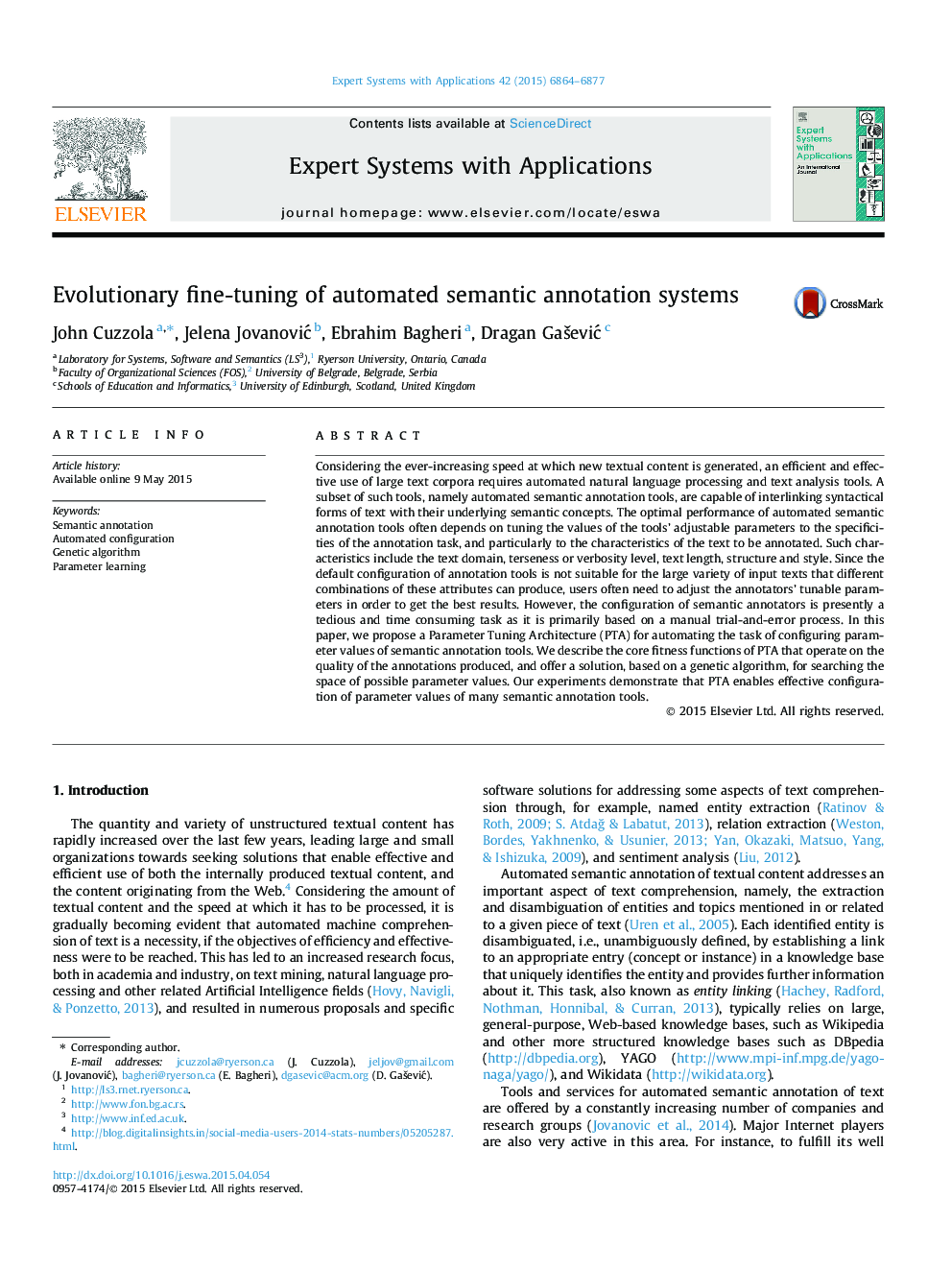| Article ID | Journal | Published Year | Pages | File Type |
|---|---|---|---|---|
| 382059 | Expert Systems with Applications | 2015 | 14 Pages |
•A method to find “best” configuration parameters for semantic annotators is proposed.•We explore the challenges of supervised training specific to semantic annotators.•We test our method on four popular semantic annotators.•Semantic annotation performance improved over their default configuration.
Considering the ever-increasing speed at which new textual content is generated, an efficient and effective use of large text corpora requires automated natural language processing and text analysis tools. A subset of such tools, namely automated semantic annotation tools, are capable of interlinking syntactical forms of text with their underlying semantic concepts. The optimal performance of automated semantic annotation tools often depends on tuning the values of the tools’ adjustable parameters to the specificities of the annotation task, and particularly to the characteristics of the text to be annotated. Such characteristics include the text domain, terseness or verbosity level, text length, structure and style. Since the default configuration of annotation tools is not suitable for the large variety of input texts that different combinations of these attributes can produce, users often need to adjust the annotators’ tunable parameters in order to get the best results. However, the configuration of semantic annotators is presently a tedious and time consuming task as it is primarily based on a manual trial-and-error process. In this paper, we propose a Parameter Tuning Architecture (PTA) for automating the task of configuring parameter values of semantic annotation tools. We describe the core fitness functions of PTA that operate on the quality of the annotations produced, and offer a solution, based on a genetic algorithm, for searching the space of possible parameter values. Our experiments demonstrate that PTA enables effective configuration of parameter values of many semantic annotation tools.
